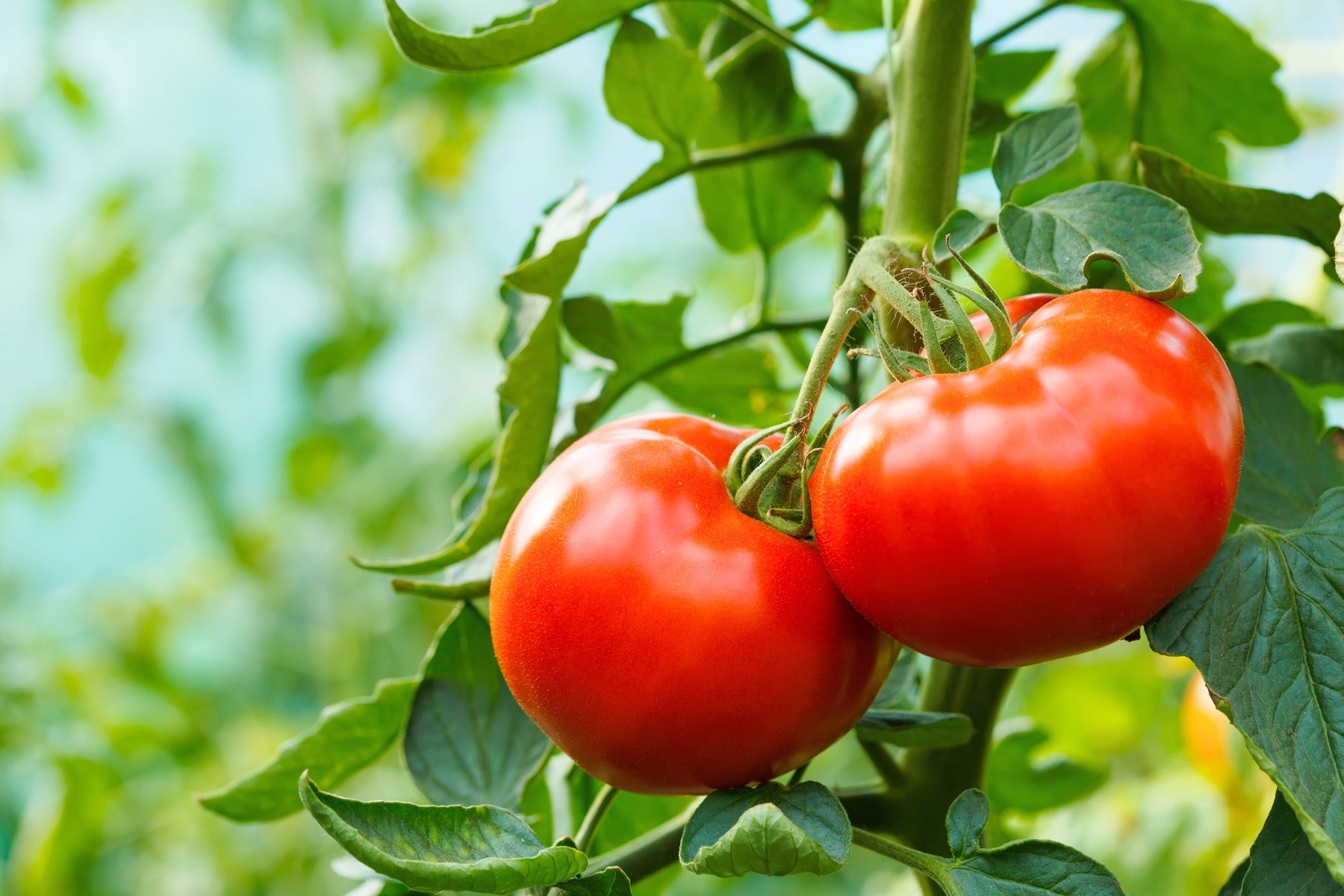
Transplanting Tomato Plants into the Garden
You’ve sowed your tomato seeds indoors, patiently waited and now you are rewarded with green seedlings that have sprouted through the soil! Now it’s time to think about transplanting your tomato plants to your garden, as the young plants are growing quickly and will need increased space to develop properly.
Up until this point, the seedlings have been kept sheltered in your home or greenhouse. The transition from these controlled growing conditions to the outdoor elements can cause unwanted stress on the young plants. Sun, wind, and fluctuating temperatures are a few elements of potential strain that your seedlings will face when they are transplanted outdoors. To ensure the proper health of your tomatoes, it is important to keep a few key factors in mind when transplanting tomato plants into your garden.
Preparing the Tomato Plants
You may have heard the phrase “hardening off”, which refers to the process of gradually introducing your plants to the outdoors. This should be done over the duration of approximately 1-2 weeks. When selecting a place outside to set the tomato plants, it is best to choose an area that is somewhat sheltered from intense sunlight and wind. You can then gradually expose the plants to more of these elements over the next couple days. For the first day, only leave the seedlings outside for a few hours, increasing the duration of time by an hour or two every day to acclimate the plants slowly. Although the exact number of days and duration of time may look different from one gardener to the next, the key is to avoid rushing this process.
Preparing the Soil
If you struggled with disease among your tomatoes in past growing seasons, you may consider selecting a new area of the garden. Rotation of planting location within your garden can help lessen the chance of soil borne diseases. After selecting a final location in your garden that receives at least 6-8 hours of sun per day, you will want to do some soil preparation in your garden to improve the success of your transplant. Tomato plants thrive in warm soil temperatures, so the warmer the better! Heavy, compacted soil or soil that currently has cover crop will take much longer to warm up. For this reason, is it important to rototill or hoe the soil to a depth of approximately 8 inches. This allows the soil to warm up quicker and maintain these higher soil temperatures. It is a good idea to start this preparation a week or two before you plan on transplanting so that the soil has sufficient time to warm up. Laying down black plastic is also a great way to offer increased soil temperatures, while also doubling in the control of weeds. Compost can also be added to the soil for additional nutrients.
Transplanting
One common mistake when planting tomatoes is not planting the seedlings deep enough. Tomato plants produce adventitious roots, which are tiny growths typically found higher up on the stem. These fibers have the unique ability to develop into full roots when they are in contact with soil. Therefore, planting tomato plants deep allows them to form stronger root systems which will help stabilize them and aid in their overall health. Dig a hole deep enough so that your tomato plant will be buried up to the first main branch. In some instances, it is beneficial to even pinch off lower leaves to ensure that your tomato plant is planted at an adequate depth. To determine the exact spacing in between plants, refer to the recommended spacing for the specific variety you are planting. It is important to avoid overcrowding the plants. Gently tamp the soil around the new planting and water unless rain is in the near forecast. If you choose to use a tomato cage or trellis, it is good to implement this at the time of planting. If inserted when the roots have been established, you risk damage to the root system. Now that your plants have been successfully transplanted, keep them watered so that the soil is kept moist and the plants happy! Check out the book Epic Tomatoes available online and at our retail store for additional tips on growing great tomatoes!
If you are interested in learning more about transplanting tomato plants into your garden, please reach out to us through social media, or send us an email at info@rohrerseeds.com!




Leave a comment